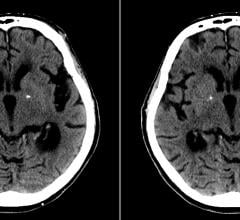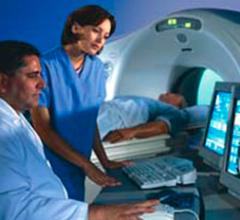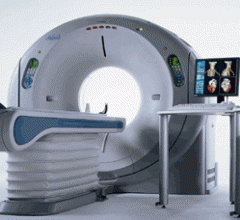Tethered to a hospital or healthcare system, one facility in a larger chain or just an independent medical provider in the middle of nowhere, ambulatory surgery centers contribute a great deal to the healthcare industry collectively and to patients individually. To some forward-thinking futurists, ASCs represent the lifeblood and eventual gateway to post-modern medicine.
Outpatient Care Technology embarked on recognizing top-notch facilities as examples of healthcare operations to emulate. While thousands certainly qualify, limited real estate constrains us to honor a few here each year.
We asked readers to submit nominations of worthy facilities to recognize based on their achievements in innovation, operational efficiency, customer service and teamwork. From there, we chose several to recognize as facilities to watch. In alphabetical order, here they are.
Brighton (NY) Surgery Center
Innovation: A dedicated Intranet for employees provides instant access to a full medical library, all policies and procedures, forms, emergency procedures, Internet access, e-mail and nonmedical document storage. The center includes a 10-seat conference room with computer smart-board for training and audio and video conferencing, as well as a seven station “television broadcasting” center providing the ability to show satellite programming, training programs or information broadcasting throughout the facility. The facility uses AdvantX Surgery Center Software, providing fully integrated scheduling, billing, materials management and physician credentialing. A dedicated data room houses four high-end file servers with one backup. Servers are all RAID-5, with redundant power. The facility also performs full environmental monitoring of heat, light, power and plumbing systems.
Operational Efficiency: Brighton Surgery Center is housed in a specially built two-story, 20,000-square-foot facility that provides enhanced access to ambulatory services to patients in a six-county area. Eighteen ophthalmologic and gastroenterology specialists in Rochester own the facility. Together, these doctors perform more than 10,000 procedures annually and they anticipate yearly growth at five percent. Services include ophthalmologic surgery, orthopedics, gastroenterology, podiatry, pain management, ear, nose and throat surgery, and general surgery. The facility was designed and built from the ground up specifically for ambulatory surgery with four 20-foot-by-20-foot operating rooms and two 14-foot-by-17-foot treatment rooms for endoscopy, pain management, laser and minor procedure cases. In the event of a power outage a 75-kilowatt generator provides complete backup power for the surgical suites and business office.
Customer Service: Brighton promotes the “Brighton Difference,” a six-step simple process that starts with focusing on the patients, assisting them in understanding the services provided and returning them to their normal lifestyles and routines as quickly as possible. By treating employees as true team members, equipping them with high-quality technology and tools and exposing them to ongoing continuing education, they provide top-notch care. Complimentary coffee, hot chocolate and tea are offered, along with wired and wireless Internet access and television.
Teamwork: Brighton recruits everyone – patients, staff and vendors – to participate in its quality improvement process. It also emphasizes a “collegial” atmosphere under the belief that all staff members deserve equal treatment because as a team they’re all committed to the ultimate objective, which is improving the patient’s health. Such a focus has led to better patient outcomes and high satisfaction rates.
Harmony Surgery Center LLC, Fort Collins, CO
Innovation: Using state-of-the-art equipment and operating rooms, Harmony is a multispecialty center that offers surgical services, gastroenterology endoscopy, pain management, laboratory, pharmacy and radiology. Procedures range from epidural steroid injections and colonoscopies to gastric bypass surgery. The facility includes four operating rooms, two gastroenterology endoscopy rooms, a pain management room and six private overnight extended recovery suites. Developed “direct access endoscopy” program facilitates the necessary medical record and paperwork between primary care and gastrointestinal surgeons, making it easier for the patient by eliminating extra doctor visits. Developed a list of criteria to determine if patients safely qualify for gastric bypass surgery and established an on-site blood bank for necessary supply.
Operational Efficiency: Procedural documentation and coding software links the facility to physicians’ offices and joint venture hospital partner, Poudre Valley Health System. Computer processing and networking technology help to improve workflow among clinical and business support staff, as well as manage budgeting.
Customer Service: Offers overnight suites to patients that require a longer length of stay in the Extended Recovery Care Center. The care ratio does not exceed one registered nurse to three patients with two nurses on staff around the clock. Emphasizes small personal touches, such as including a “thank you” note signed by staffers that is attached to the patient’s chart and given to the patient at discharge. Also provides basic, but detailed, sourcing information for discount motel lodging.
Teamwork: Promotes a “team of one” philosophy in which all employees are equal, essential and integral to the facility’s success. Offers a bonus incentive program for reaching and exceeding a variety of clinical and business indicators.
Springhill Surgery Center, North Little Rock, AR
Innovation: With more than 80 percent of all surgical procedures now being performed in the outpatient surgery arena, Springhill Surgery Center continues to evolve its technology and service offerings to meet the growing market demands. The center’s core information technology vendor is SourceMedical, and through the company’s Vision product, staff members are able to monitor inventory levels on an ongoing basis and forecast case costs. The facility can pull reports to support daily operations and drive critical decisions. In addition, Springhill utilizes technology as a system of checks and balances to avoid doing duplicate work.
Operational Efficiency: Springhill is part of a five-ASC system that not only manages the centers, but constructs them from the ground up. In an effort to enhance case flow, a life system was put in place that tracks patients through their entire experience at the center. The staff proactively contacts each patient prior to their procedure to obtain and address all financial and demographic information. When the patient walks into the facility, they are ready for their procedure. CRNAs assist RNs in performing tasks, such as taking blood pressure and vital signs, to maximize the nurses’ face time with each patient.
Customer Service: Springhill Surgery acknowledges that privacy is very important to patients, and patient interview areas have been designed to provide the highest degree of privacy. Cubicles are built with walls, not curtains or partitions. Additionally, to enhance patient comfort, pre-warming blankets are provided to all patients. Special warming machines are placed at each bedside to blow warm air. Also, families are intimately involved in all phases of the patient’s experience and are allowed to be present in the pre-op and phase two recovery areas.
Teamwork: Administrators stay abreast of the ASC updates of all Medicare-approved procedures. The management team regularly makes physicians aware of what new procedures can be brought to the facility. Effective Jan. 1, Springhill Surgery has more than 800 procedures approved by Medicare to be performed on an outpatient basis. Additionally, the facility administers a financial distribution program to all staff members. That way, when the center meets certain revenue goals, the staff gets a share of that profit as well.
Surgery Center of Pelham, Greer, SC
Innovation: Surgery Center at Pelham uses Vision software from SourceMedical to assess live charges in the OR. Vision’s tracking system allows users to monitor patients throughout every phase of their visits – from the time they come in the front door until the staff helps them into their cars. When each case is completed, the administrator can literally meet the surgeon at the door and show him or her the actual cost of the entire case. The center’s goal is to safely minimize the complete patient stay to the least amount of time possible.
Operational Efficiency: Patients are called the day prior to their surgeries and given instructions on what time to be at the center for their procedure. This step has helped streamline the scheduling process because staff can then better accommodate cancellations and situations when patients need to be moved to a different time slot on the schedule. All staff works the same shift; therefore the entire staff stays at the center until every case is completed.
Customer Service: For the last three months, the center has maintained 100 percent patient satisfaction, and in fact, patient satisfaction has never fallen below 99.8 percent. Satisfaction levels are measured via patient surveys, which are given to every patient. The center has witnessed a great return rate to the surveys, with an average of 20-25 percent of those distributed, returning back to the office. In addition, staff plays soft music in the post-op areas to help patients relax prior to their procedures. Top-tier management, including the administrator and clinical director attempts to speak to every patient prior to or immediately after surgery.
Teamwork: The Surgery Center at Pelham takes a team approach and uses a bonus program to reduce costs and achieve high levels of patient satisfaction. Because of this, employees are more inclined to pitch in whenever and wherever they are needed. The bonus system is based on five criteria: physician satisfaction, case cost, inventory, revenue per case and patient satisfaction. Staff meetings are held monthly by department, and employees are encouraged to come up with their own solutions to address any problems or inefficiencies and then implement changes to improve procedures.
Wichita (KS) Clinic and Wichita Clinic at Founders’ Circle
Innovation: When Wichita Clinic reached the limits of its expansion capabilities, it created a second multispecialty facility (opened in 2005) roughly 10 miles away, converting the original facility into a single-specialty endoscopy center with more opportunities to grow. At 31,000 square feet, the Founders’ Circle facility is more than twice the size of the original. Operating rooms include ceiling-mounted flat panel monitors, lights and anesthesia booms. Wichita Clinic houses four endoscopy suites; Founders’ Circle houses seven ORs and two endoscopy suites. It offers full service lab and imaging (digital radiology, 64-slice CT, 1.5 Tesla Open Bore MRI) on site with shared electronic medical records. Celebrating its 60th anniversary in 2008.
Operational Efficiency: Founders’ Circle connects via covered walkway to an adjacent medical office building that includes physician offices, physical therapy, pain management, laboratory, imaging and building and purchasing services for the entire organization. Founders’ Circle was designed with patient flow in mind so that the patient progresses through the facility in a circular motion, which also maintains a clear separation between pre-operative and post-operative patients.
Supplies are ordered on a just-in-time basis and stored on site, which eliminates the need for the purchasing department to make purchases weeks in advance.
Customer Service: In all matters, the clinic and its staff put the patient first. The clinic offers a full range of services by specialty and diagnostic capability. The latter includes ultrasound, nuclear medicine, CT scanning, MRI, digital radiology and bone densitometry. Offers overnight stay services for up to three patients three days a week, which typically isn’t reimbursed but is viewed as a patient service. Offers primary care (family and internal medicine and pediatrics), specialty care (including breast care, cardiovascular, colorectal surgery, dentistry, dermatology, endocrinology, gastroenterology, neurology and neurosurgery, obstetrics and gynecology, ophthalmology and optometry, orthopedics, ENT, pain management, plastic surgery, podiatry, radiology and urology) and other services.
Teamwork: Staff members are cross-trained for more efficiency. Weekly meetings keep clinical and business staff on the same page. In addition, schedulers meet monthly to streamline scheduling procedures.


 September 03, 2021
September 03, 2021 



